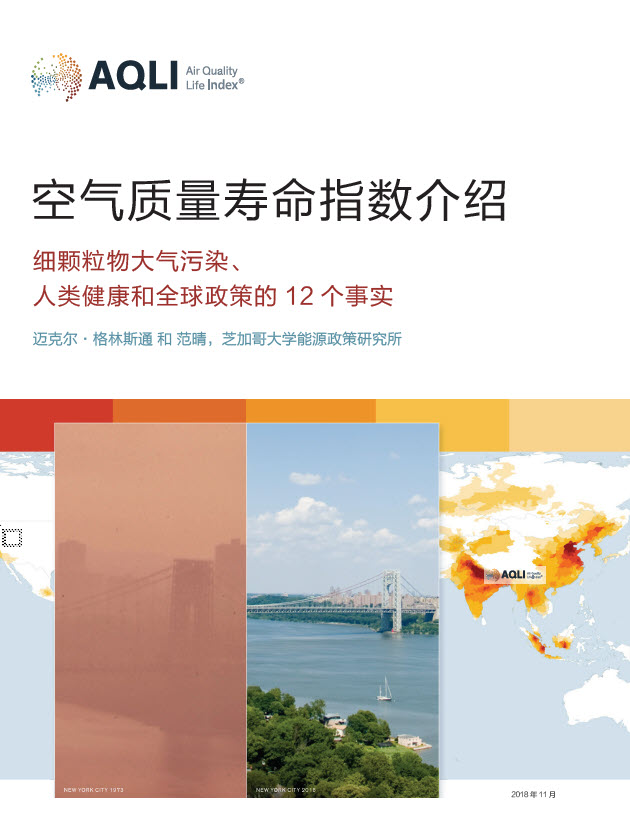• 2023六月
年度报告
Michael Greenstone, Christa Hasenkopf
空气污染是地球上人类预期寿命的最大外部威胁。AQLI 的2021年最新数据显示,永久减少全球PM2.5空气污染以达到世界卫生组织 (WHO) 的指导标准,将使人类 平均预期寿命延长2.3年,即总共节省178亿生命年。PM2.5对全球预期寿命的影响与吸烟相当,是饮酒和不安全饮用水的3倍以上,是车祸等交通伤害的5倍以上,是艾滋病的7倍以上。

空气污染是地球上人类预期寿命的最大外部威胁。AQLI 的2021年最新数据显示,永久减少全球PM2.5空气污染以达到世界卫生组织 (WHO) 的指导标准,将使人类 平均预期寿命延长2.3年,即总共节省178亿生命年。PM2.5对全球预期寿命的影响与吸烟相当,是饮酒和不安全饮用水的3倍以上,是车祸等交通伤害的5倍以上,是艾滋病的7倍以上。
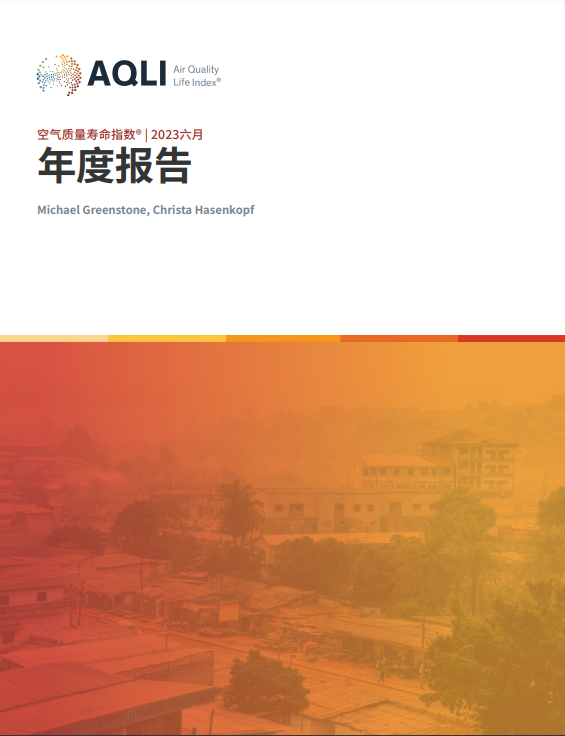
-8月-2
空气污染是地球上人类预期寿命的最大外部威胁。AQLI 的2021年最新数据显示,永久减少全球PM2.5空气污染以达到世界卫生组织 (WHO) 的指导标准,将使人类 平均预期寿命延长2.3年,即总共节省178亿生命年。PM2.5对全球预期寿命的影响与吸烟相当,是饮酒和不安全饮用水的3倍以上,是车祸等交通伤害的5倍以上,是艾滋病的7倍以上。

-8月-2
Air pollution’s impact on life expectancy in Nigeria is greater than that of HIV/AIDS and almost on par with malaria and unsafe water and sanitation, shortening the average Nigerian’s life expectancy by 1.8 years, relative to what it would be if the World Health Organization (WHO) guideline of 5 µg/m3 was met. Some areas of Nigeria fare much worse than average, with air pollution shortening lives by almost 4 years on average in parts of Taraba state in Northeastern Nigeria.
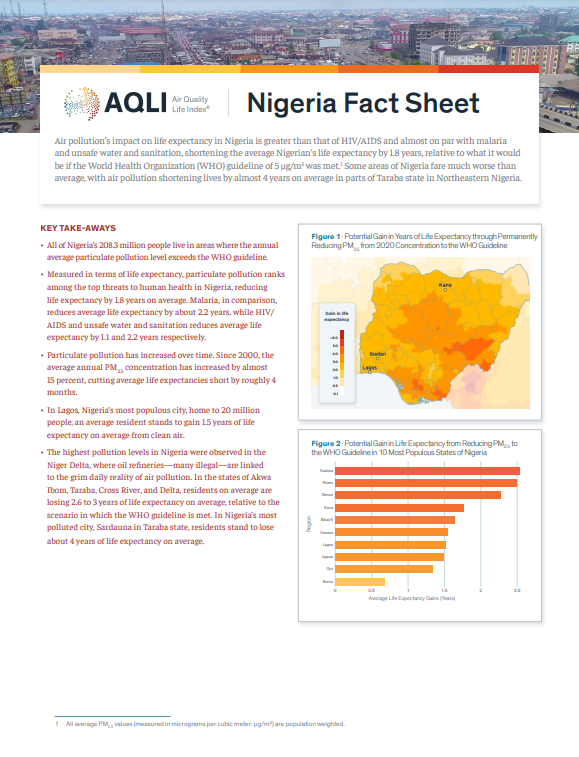
-8月-2
Bangladesh is the world’s most polluted country. Fine particulate air pollution (PM2.5) shortens the average Bangladeshi resident’s life expectancy by 6.8 years, relative to what it would be if the World Health Organization (WHO) guideline of 5 µg/m³ was met. Some areas of Bangladesh fare much worse than average, with air pollution shortening lives by 8.3 years in Gazipur, the country’s most polluted district located near the capital city of Dhaka.
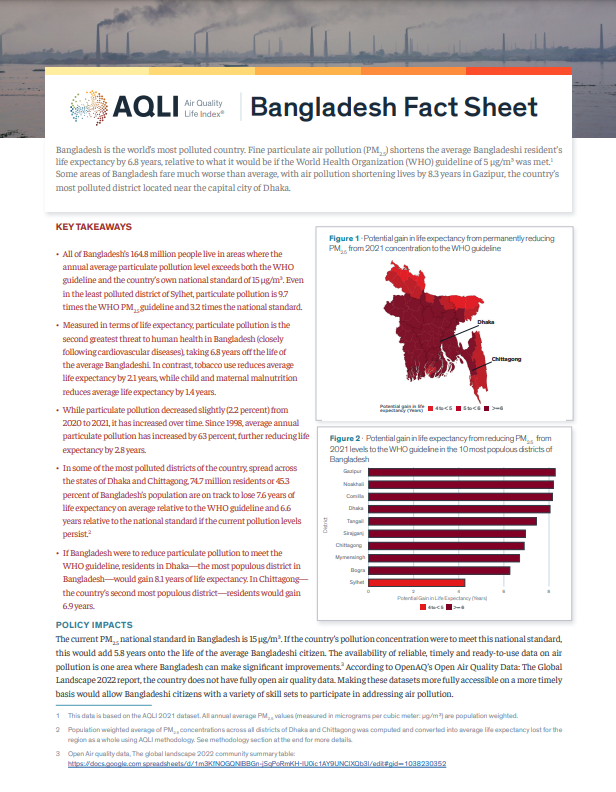
-8月-2
Guatemala is the most polluted country in North America and the 16th most polluted country in the world. Fine particulate air pollution (PM2.5) shortens the average Guatemalan resident’s life expectancy by 2.4 years, relative to what it would be if the World Health Organization (WHO) guideline of 5µg/m3 was met. Some areas of Guatemala fare much worse than average, with air pollution shortening lives by 4.4 years in Mixco, the country’s most polluted municipality in the Guatemala department.
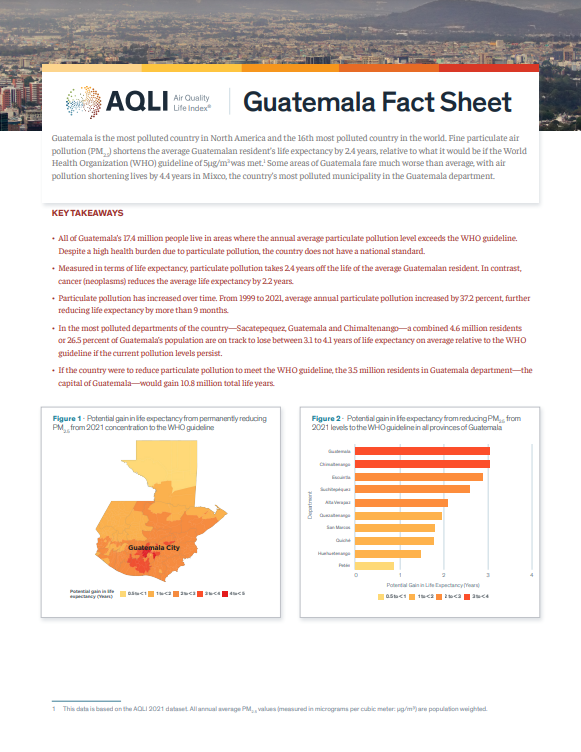
-8月-2
Virtually all of Southeast Asia’s 673.7 million people live in areas where fine particulate air pollution (PM2.5) exceeds the World Health Organization (WHO) guideline of 5 µg/m³. Particulate pollution reduces the life expectancy of the average resident of Southeast Asia by 1.6 years relative to what it would be if the WHO guideline was met. Combined, the 11 countries that comprise this region lose 1.1 billion total life years to air pollution.
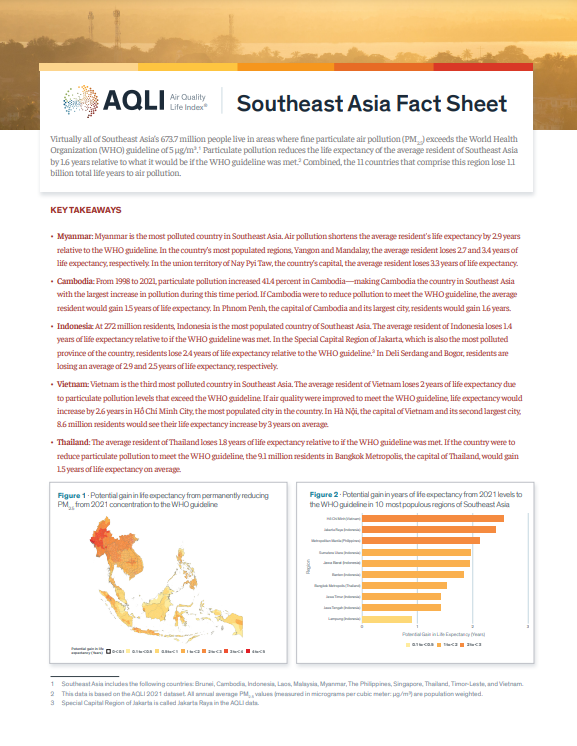
-8月-2
Fine particulate air pollution (PM2.5) shortens the average South Korean’s life expectancy by 1.5 years, relative to what it would be if the World Health Organization (WHO) guideline of 5 µg/m3 was met. Some areas of South Korea fare much worse than average, with air pollution shortening lives by 2.1 years in Gyeyang.
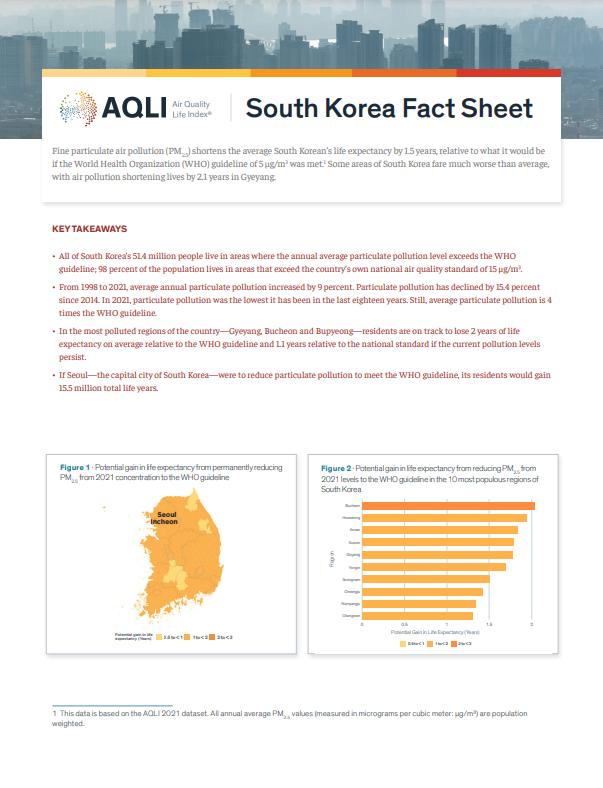
-8月-2
Of the world’s 30 most polluted countries, eight are in Central and West Africa, a region that comprises 27 countries and 638.7 million people. Fine particulate air pollution (PM2.5) shortens the average Central and West African’s life expectancy by 1.6 years, relative to what it would be if the World Health Organization (WHO) guideline of 5 µg/m3 was met. In this region, average particulate pollution levels are 4.2 times the WHO guideline, which amounts to a total of 1 billion life years lost to pollution for this region as a whole. Central Africa is more polluted than Western Africa, with the Central African countries of the Democratic Republic of the Congo, Republic of the Congo and Rwanda being the most polluted countries. Air pollution is shortening lives by 2.4 years for the average resident of Central Africa. In comparison, an average resident of West Africa loses 1.2 years of life expectancy.
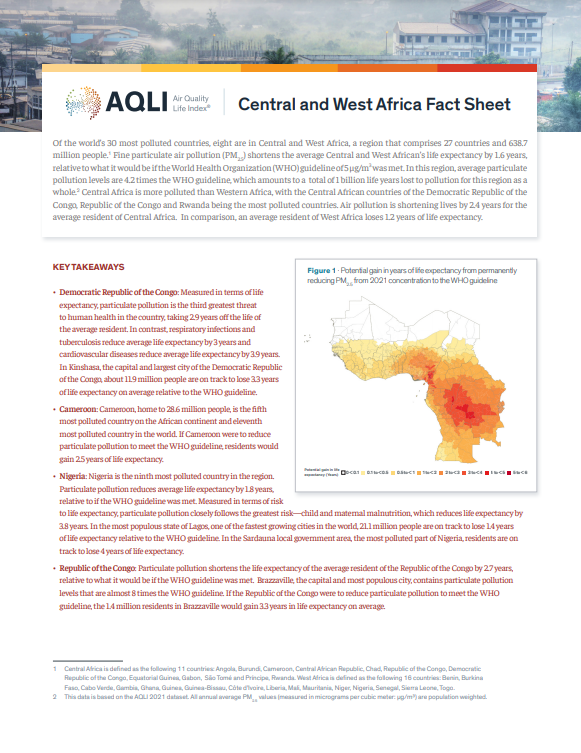
-8月-2
Fine particulate air pollution (PM2.5) shortens the average Thai resident’s life expectancy by 1.8 years, relative to what it would be if the World Health Organization (WHO) guideline of 5 µg/m³ was met. Some areas of Thailand fare much worse than average, with air pollution shortening lives by 3 years in Phan, the country’s most polluted district in the Chiang Rai province.
See Past Reports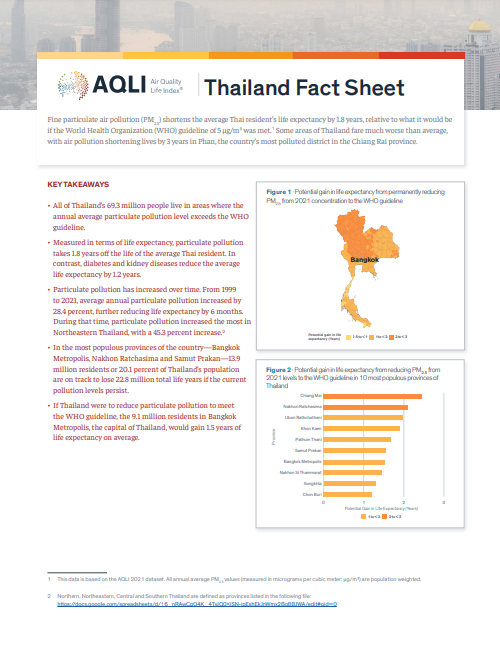
-8月-2
Colombia is the sixth most polluted country in South America. Fine particulate air pollution (PM2.5) shortens the average Colombian resident’s life expectancy by 10 months, relative to what it would be if the World Health Organization (WHO) guideline of 5 µg/m3 was met. Some areas of Colombia fare much worse than average, with air pollution shortening lives by 2 years in Puerto Leguízamo, the country’s most polluted municipality in the Putumayo department.
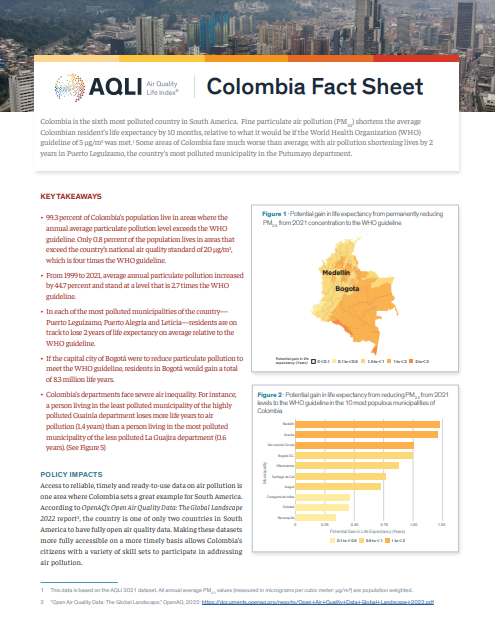
-8月-2
Fine particulate air pollution (PM2.5) shortens the average Indonesian resident’s life expectancy by 1.4 years, relative to what it would be if the World Health Organization (WHO) guideline (5 µg/m³) was met. Some areas of Indonesia fare much worse than average, with air pollution shortening lives by 2.9 years in Deli Serdang, the most polluted regency/city in Indonesia.
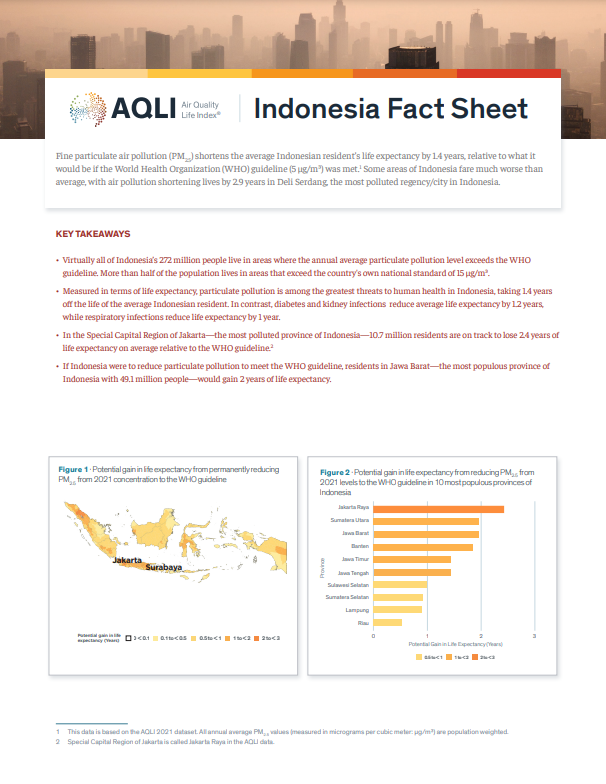
-8月-2
Nepal is the world’s third most polluted country based on satellite-derived PM2.5 data. Fine particulate air pollution (PM2.5) shortens the average Nepalese resident’s life expectancy by 4.6 years, relative to what it would be if the World Health Organization (WHO) guideline of 5 µg/m3 was met. Some areas of Nepal fare much worse than average, with air pollution shortening lives by 6.8 years in the nine districts with the highest concentration of particulate pollution. These districts lie in southern Nepal and share their borders with the highly-polluted Northern Plains of India.
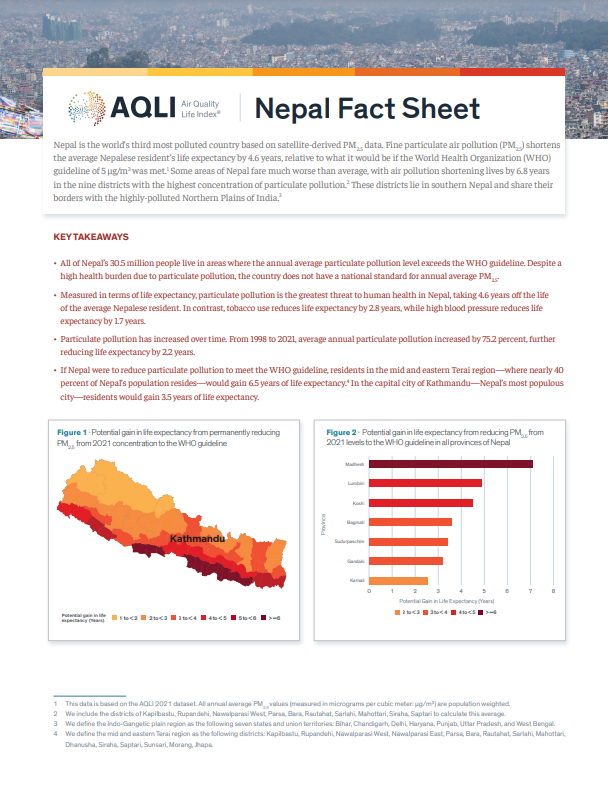
-8月-2
Thanks to sustained enforcement of strong policies, European residents are exposed to 23.5 percent less fine particulate pollution (PM2.5) than they were in 1998, gaining 4.5 months of life expectancy because of it. Despite this success, the latest scientific evidence on the impact of particulate pollution at even the low levels that exist in much of Europe reveals that 98.4 percent of the population are now living in areas with unsafe levels of pollution.
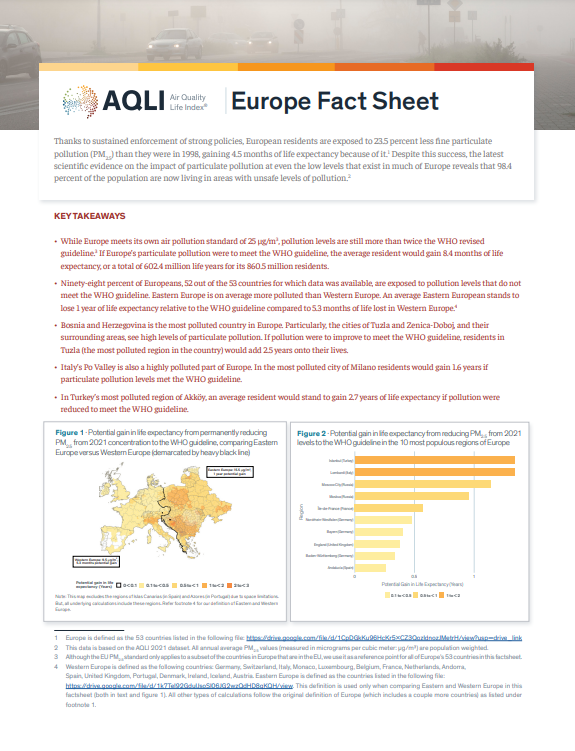
-8月-2
India is the world’s second most polluted country. Fine particulate air pollution (PM2.5) shortens an average Indian’s life expectancy by 5.3 years, relative to what it would be if the World Health Organization (WHO) guideline of 5 µg/m3 was met. Some areas of India fare much worse than average, with air pollution shortening lives by 11.9 years in the National Capital Territory of Delhi, the most polluted city in the world.
See Past Reports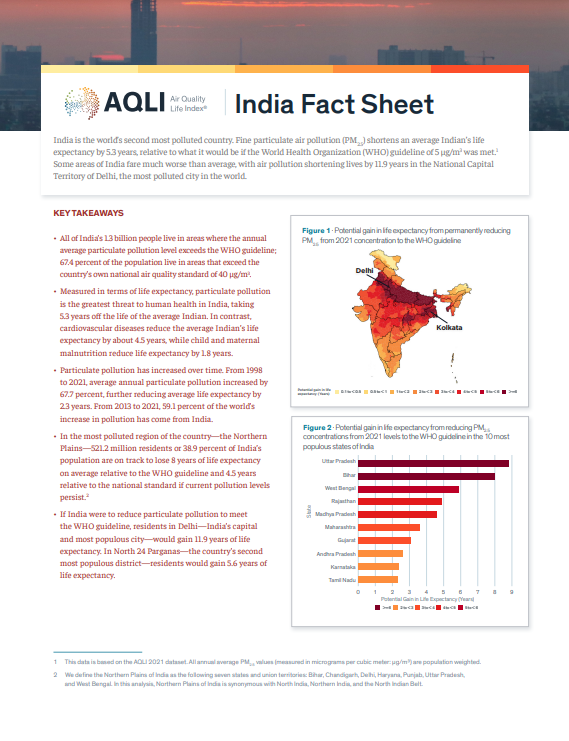
-8月-2
The world’s 50 most polluted regions all belong to the Northern Plains of India. The seven states and union territories comprising the majority of this region—Bihar, Chandigarh, Delhi, Haryana, Punjab, Uttar Pradesh, and West Bengal face the greatest health burden due to particulate pollution in India. Fine particulate air pollution (PM2.5) shortens an average Indian’s life expectancy by 5.3 years, relative to what it would be if the World Health Organization (WHO) guideline of 5 µg/m3 was met. In North India, it shortens lives by 8 years—underscoring the outsized benefits effective pollution policy would have, allowing residents of North India to gain 4.2 billion life years in total.
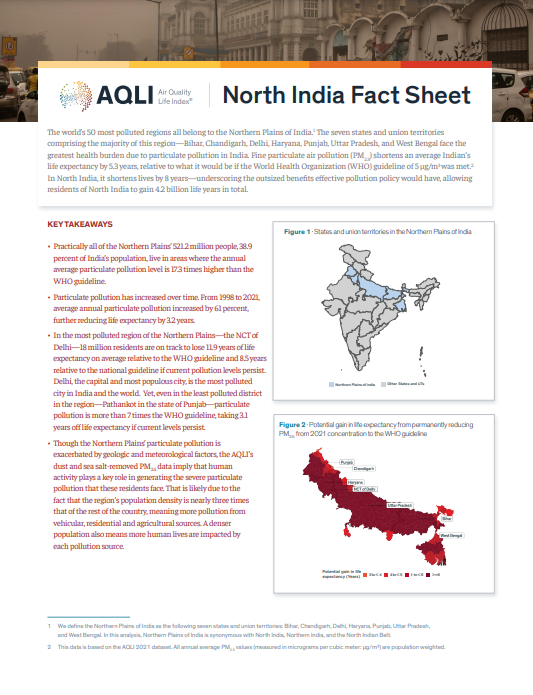
-8月-2
Pakistan is the world’s fourth most polluted country. Fine particulate air pollution (PM2.5) shortens the average Pakistani resident’s life expectancy by 3.9 years, relative to what it would be if the World Health Organization (WHO) guideline of 5 µg/m3 was met. Some areas of Pakistan fare much worse than average, with air pollution shortening lives by almost 7 years in the country’s most polluted regions like Lahore, Sheikhupura, Kasur and Peshawar.
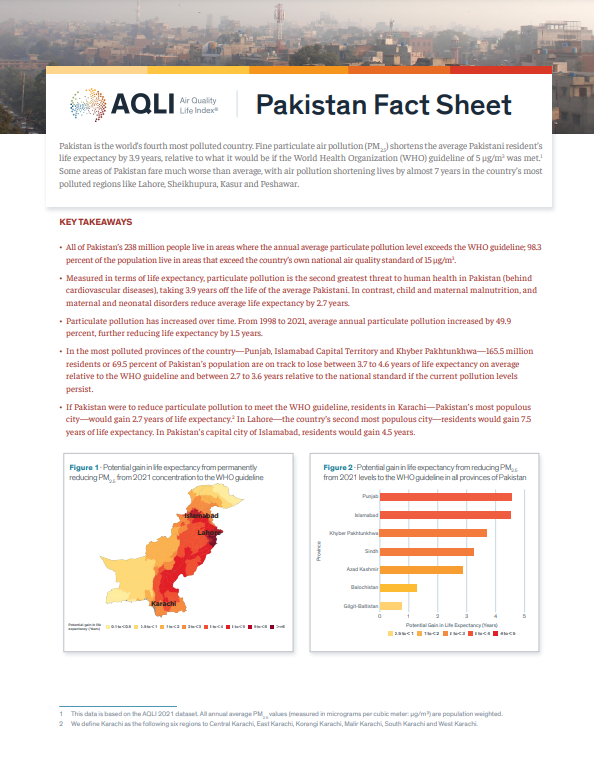
-8月-2
Since the Clean Air Act was enacted in 1970, particulate pollution (PM2.5) in the United States has declined by 64.9 percent—extending the life expectancy of an average American by 1.4 years. The country’s average pollution has been in compliance with its national air quality standard (12 µg/m³) since 2001 (See figure 4). Despite this success, the latest scientific evidence on the impact of pollution at even the low levels that exist in much of the United States reveals that 96 percent of the population are living in areas with unsafe levels of pollution. While there is potential for further progress, the United States still has low levels of particulate pollution compared to many other parts of the world—making the health impacts from reducing particulate pollution small in comparison.
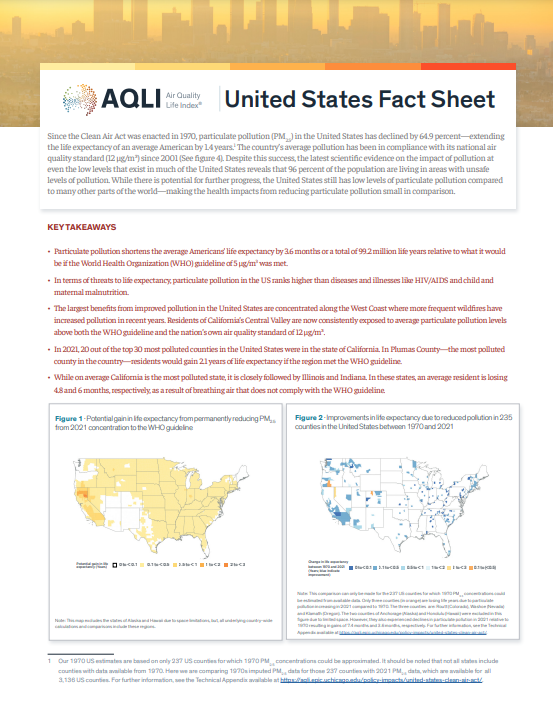
-6月-2
在新冠肺炎疫情席卷全球的第一年,世界经济发展明显放缓,全球年平均颗粒物污染水平(PM2.5)相比起2019年的水平来说却基本没有变化。与此同时,越来越多的研究证据表明,就算是暴露在非常低水平的空气污染之下,人类健康也会收到明显的伤害。这导致世界卫生组织(WHO)在最近修改了其颗粒物污染暴露水平的安全健康标准(从10微克每立方米降至5微克每立方米)。这使世界上大部分地区(全球97.3%人口的居住地)被归纳为空气不安全地区。
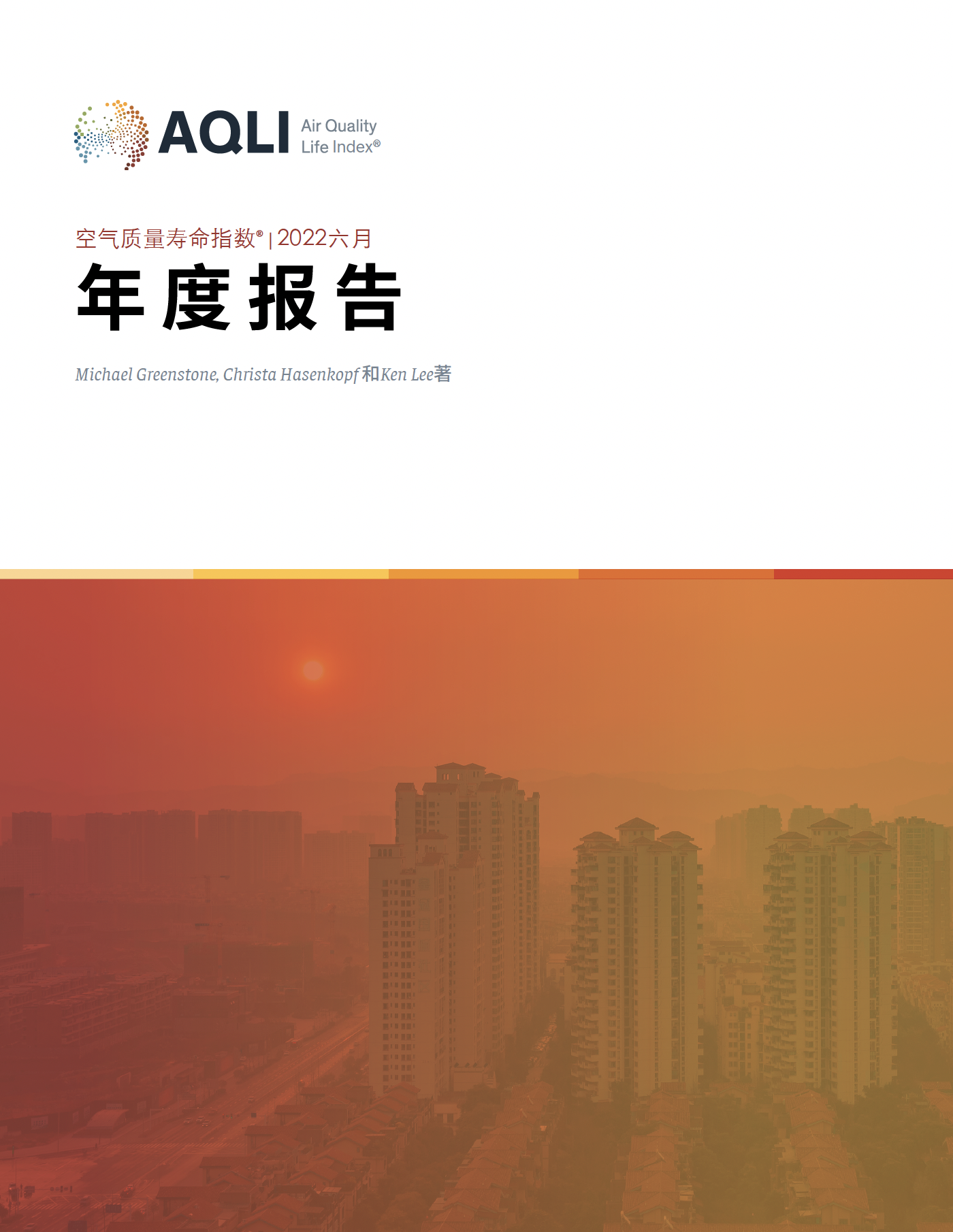
-9月-2
The average Indonesian can expect to lose 2.5 years of life expectancy at current pollution levels, according to the Air Quality Life Index (AQLI), because air quality fails to meet the World Health Organization (WHO) guideline for concentrations of fine particulate matter (PM2.5). The pollution index shows that the health impacts of particulate pollution are the greatest in Depok, Bandung, and Jakarta, where particulate pollution concentrations are the highest.
See Past Reports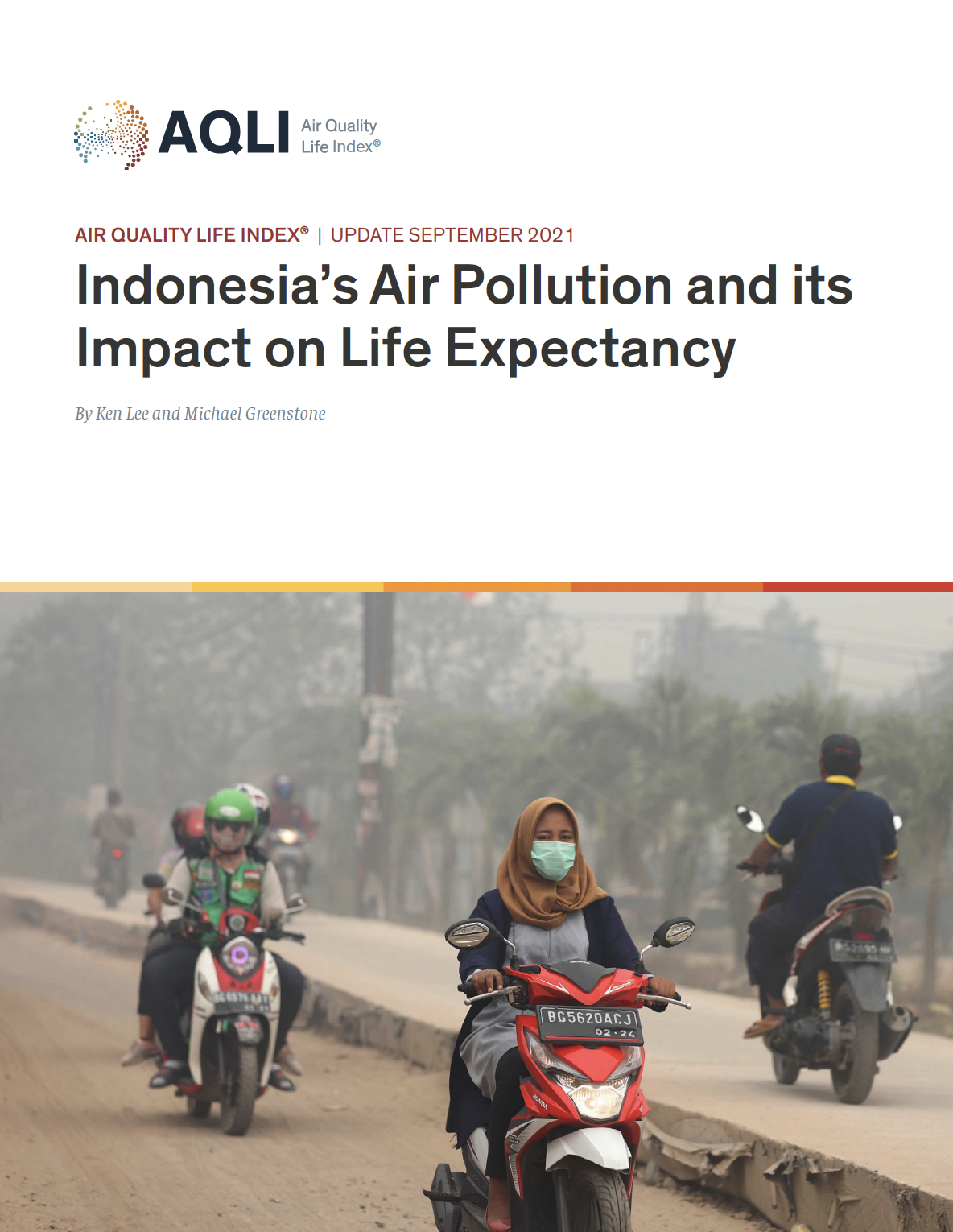
-9月-2
中国的细颗粒物(PM2.5)空气污染自2014年宣布“打赢蓝天保卫战”以来一直在减少。这一下降趋势一直持续到2021 年,与2013年相比,污染水平下降了42%。由于这些改善,普通中国公民的预期寿命可以延长2.2年,前提是污染的减 少能得以持续。尽管如此,治污工作依然任重道远。虽然中国的整体颗粒物污染平均值符合国家标准,为每立方米35微克,但污染水平仍显著超过世界卫生组织(WHO)的指导标准,即每立方米5微克。因此,相对于如果达到WHO指导标准,目前的颗粒物污染会使普通中国居民的预期寿命减少2.5年。
See Past Reports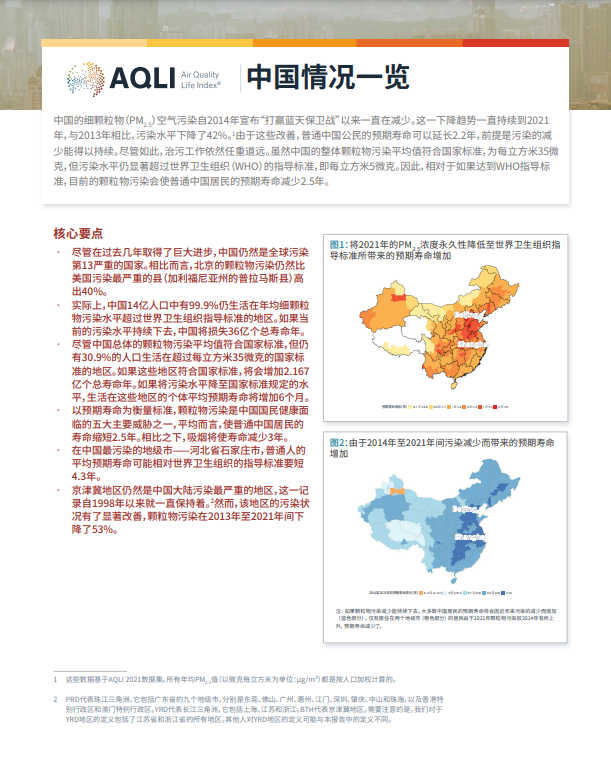
-9月-2
在过去的一年里,新冠肺炎封锁措施为地球上一些污染最为严重的地区带来了蓝天白云,但在世界的另一端,被愈加高温和干燥的气候而加剧了的野火把烟雾送到了数千英里之外的城市上空。这两个大相径庭的生活现状为我们呈现了两个形成鲜明对比的未来,而区分这两种未来的关键就在于减少化石燃料消耗的政策。空气质量寿命指数(AQLI)的全新数据强调了对空气污染毫无作为的社会危害性。除非全球颗粒物污染水平下降到世界卫生组织(WHO)认可的安全水准,人类的预期寿命将平均缩短2.2年。对于空气污染最严重地区的居民,他们的预期寿命可能将缩短超过5年。悄无声息的PM2.5污染对人类预期寿命的影响比肺结核、艾滋病、吸烟甚至战争等传染病和行为健康风险都更具破坏性。
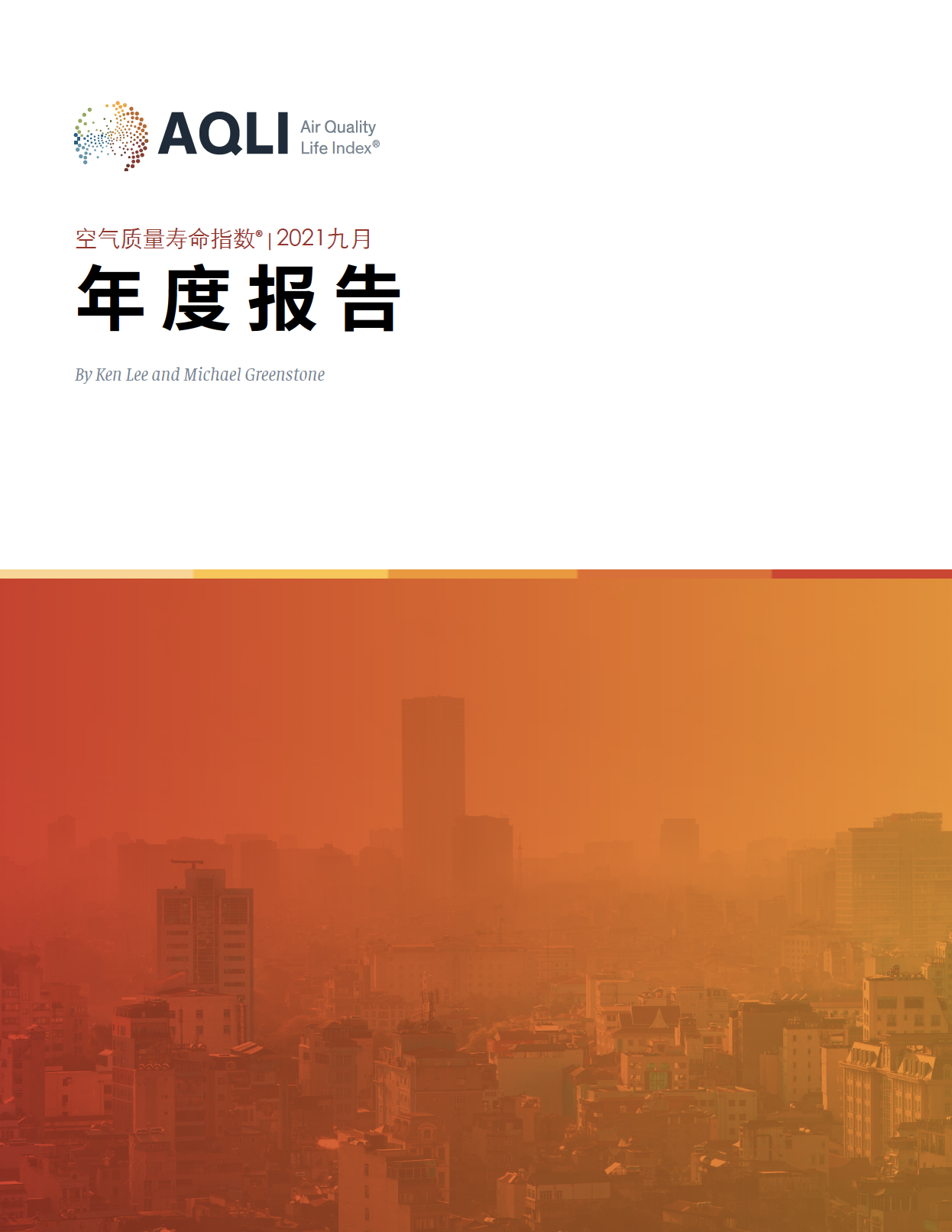
-2月-2
近二十年来,中国一直是世界上污染最严重的前五个国家之一。但自 2014 年成功发起了一场“蓝天保卫战” 之后,中国的细颗粒物污染减少了约 40%——近年来跌出了污染最严重国家排名的前五位。事实上,从 2013 年到 2018 年,全球细颗粒物污染降幅中近四分之三来自中国。如果这种趋势保持下去,中国人的预期寿命将延长 2年。京津冀是 2013 年中国污染最严重的地区之一,目前细颗粒物污染减少了 41%,如果保持下去,该地区 1.08亿居民的预期寿命将延长 3.4 年。
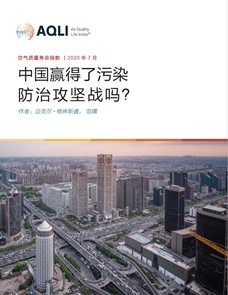
-7月-2
近二十年来,中国一直是世界上污染最严重的前五个 国家之一。但自2014 年成功发起了一场“蓝天保卫战” 之后,中国的细颗粒物污染减少了约40%——近年来跌 出了污染最严重国家排名的前五位。事实上,从2013 年 到2018 年,全球细颗粒物污染降幅中近四分之三来自中 国。如果这种趋势保持下去,中国人的预期寿命将延长2 年。京津冀是2013 年中国污染最严重的地区之一,目前 细颗粒物污染减少了41%,如果保持下去,该地区1.08 亿居民的预期寿命将延长3.4 年。
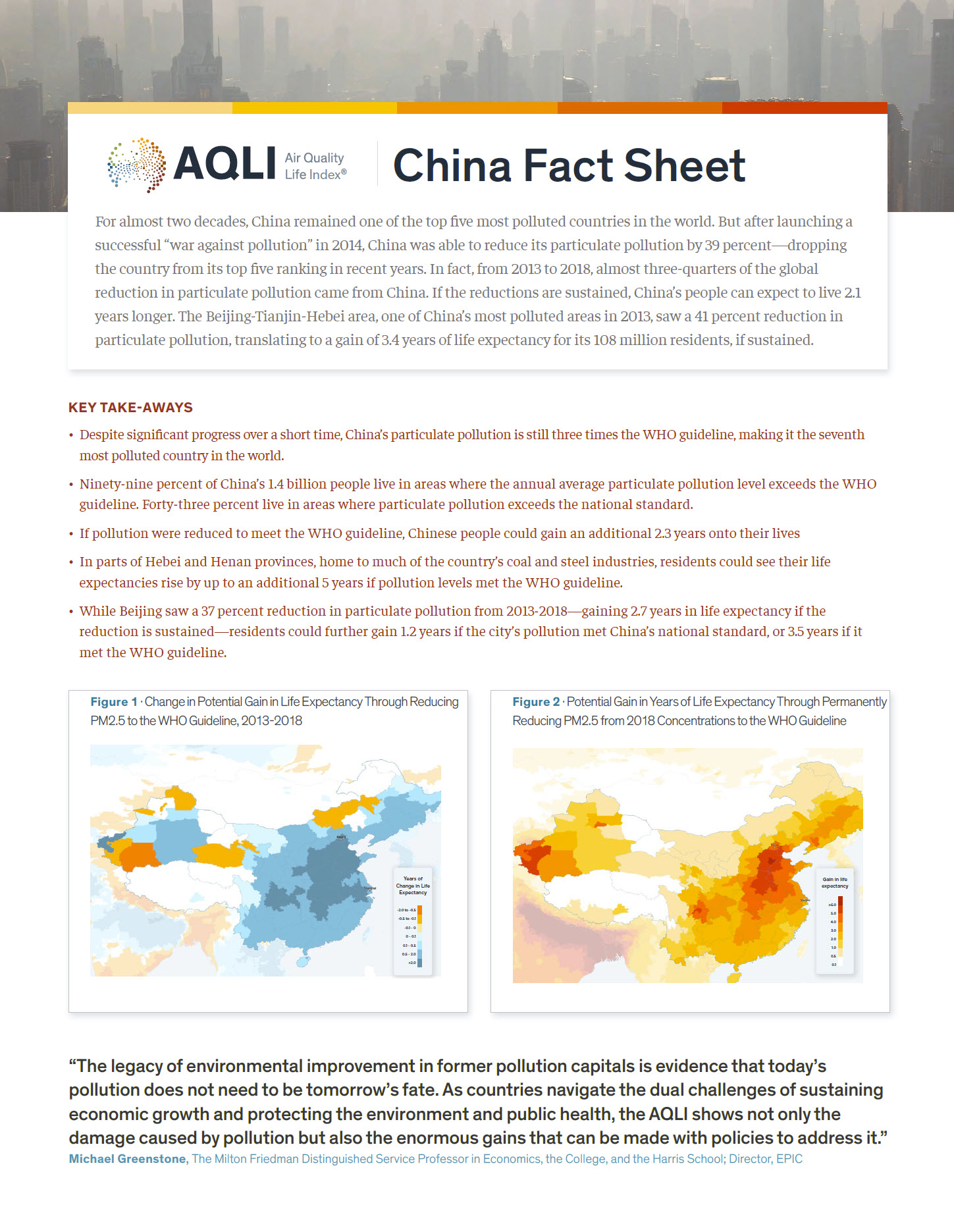
-7月-2
来自空气质量寿命指数 (“AQLI”) 的最新数据显示,在新冠肺炎爆发之前,空气污染是人类健康的最大威胁,在新冠肺炎之后,如果没有强大而持续的公共政策,空气污染仍将是最大威胁。世界很多地区还没有充分认识到空气污染的严重性,数十亿人的寿命可能因此缩短,健康状况恶化。
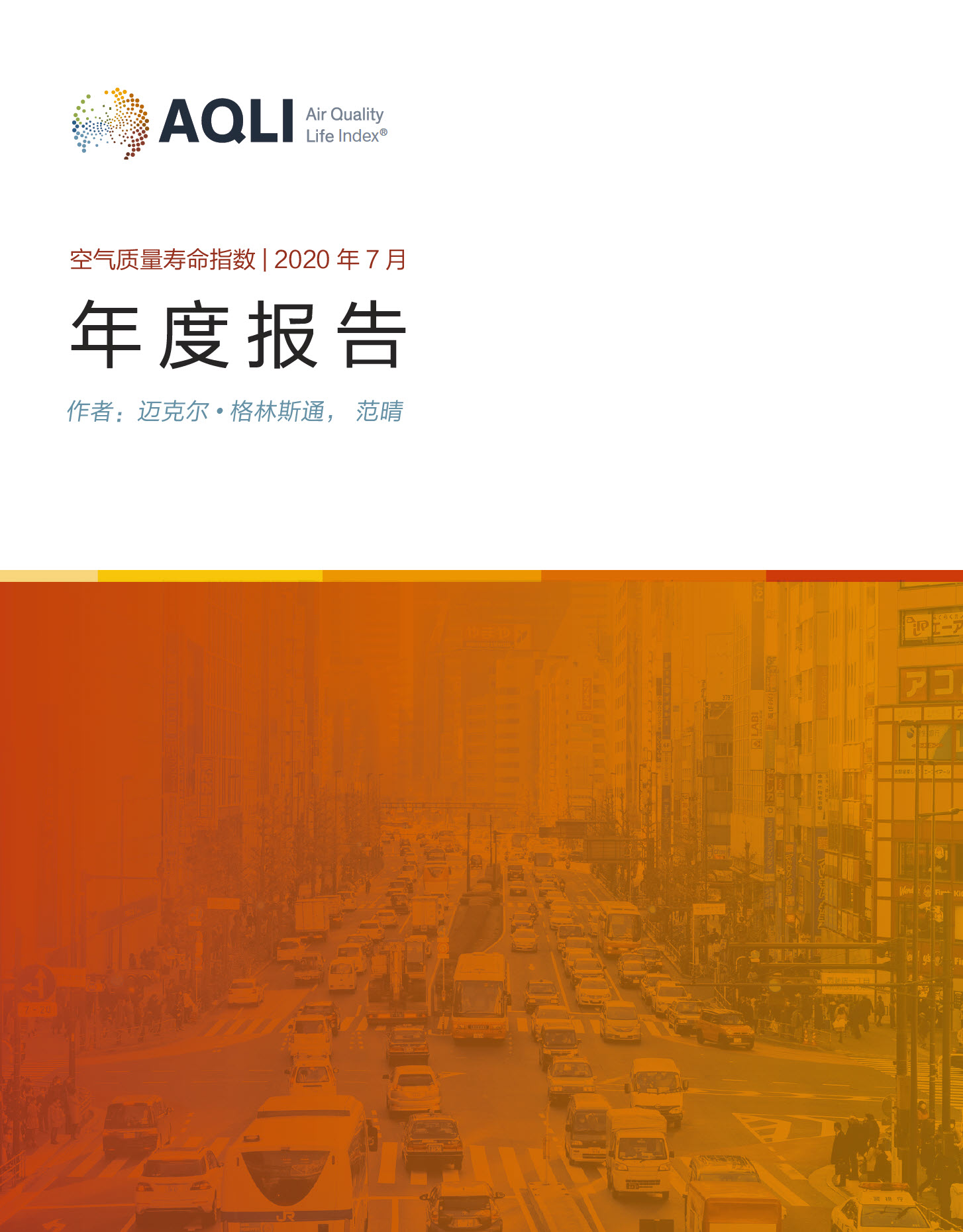
-7月-2
Indonesia is today the world’s ninth most polluted country. Air pollution shortens the average Indonesian’s life expectancy by 2 years, relative to what it would have been if the World Health Organization (WHO) guideline was met. Some areas of Indonesia fare much worse than average, with air pollution shortening lives by more than 7 years in the most polluted region.
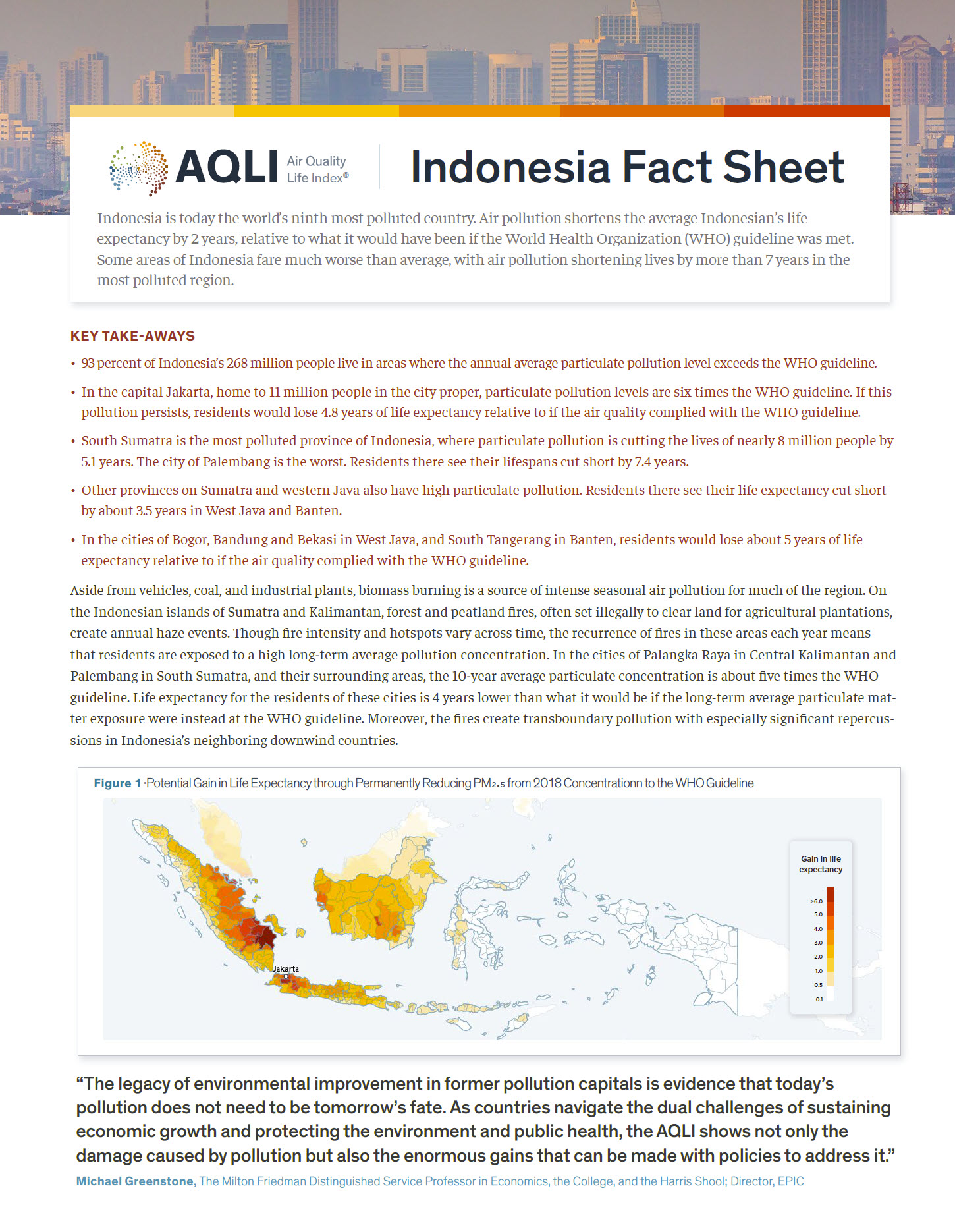
-10月-2
More than 480 million people, or about 40 percent of India’s population, reside in the seven states and union territories comprising the bulk of the Indo-Gangetic Plain region of north India – Bihar, Chandigarh, Delhi, Haryana, Punjab, Uttar Pradesh, and West Bengal (Figure 1). Though the Indo-Gangetic Plain’s particulate pollution is exacerbated by geologic and meteorological factors, the AQLI’s dust- and sea salt-removed fine particulate matter (PM2.5) data imply that human activity plays a key role in generating the severe particulate pollution that these residents face. That is likely due to the fact that the region’s population density is more than three times that of the rest of the country, meaning more pollution from vehicular, residential, and agricultural sources. A denser population also means more human lives are impacted by each pollution source. Across India, reducing particulate pollution to the World Health Organization’s guideline of 10 μg/m3 would increase the national average life expectancy by 4.3 years. In north India, there would be outsize impacts of policy that reduces air pollution to meet Indian or International norms.
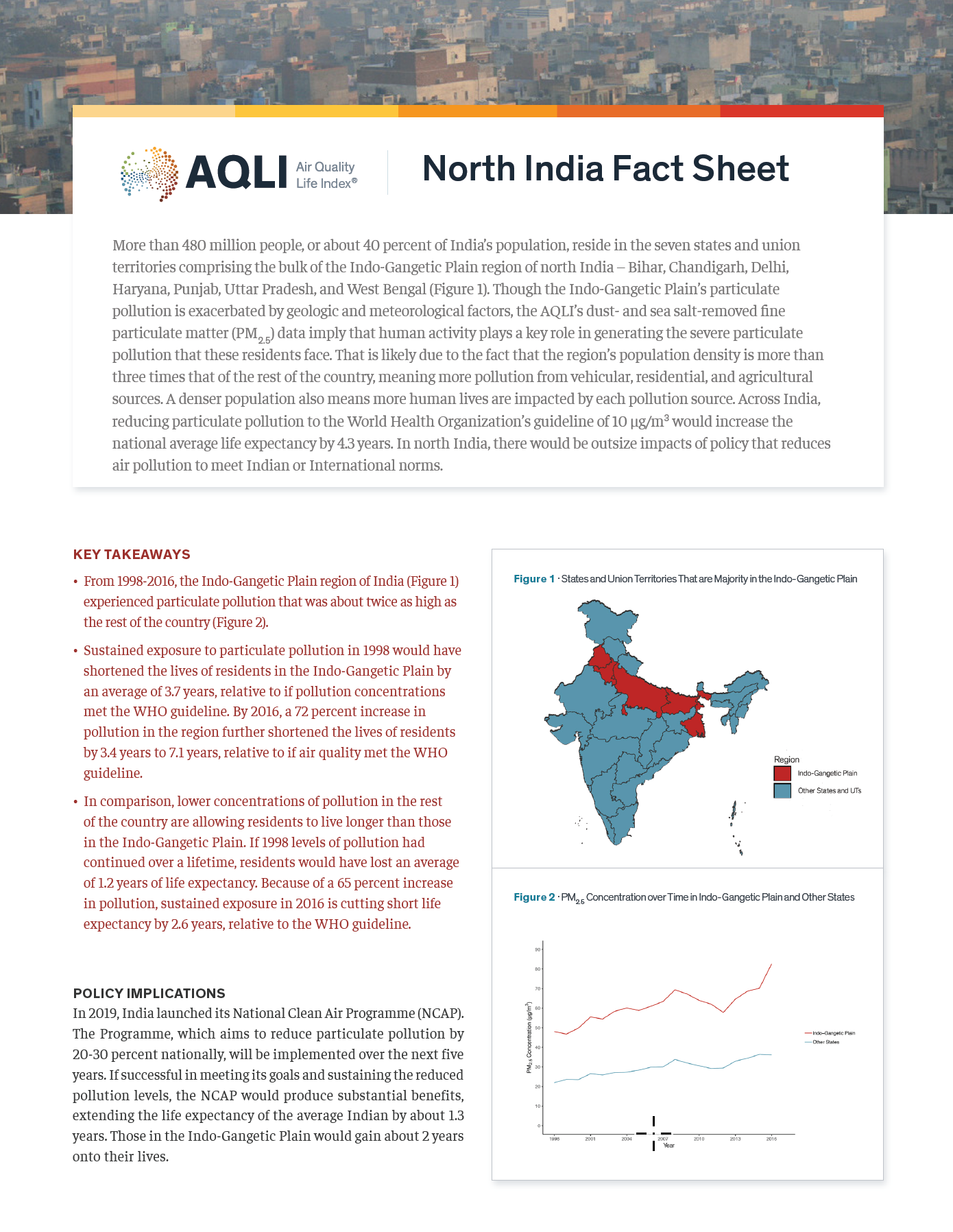
-1月-2
In 2019, India declared a “war against pollution” and launched its National Clean Air Programme (NCAP), signaling its desire to reduce particulate air pollution—the greatest threat to human health on the planet. The Programme, which aims to reduce particulate pollution by 20-30 percent nationally, will be implemented over the next five years. If successful in meeting its goals and sustaining the reduced pollution levels, the NCAP would produce substantial benefits, extending the life expectancy of the average Indian by about 1.3 years. People breathing the most polluted air—namely those in Delhi and parts of Uttar Pradesh—could live up to 3 years longer. Further, the NCAP highlighted 102 cities containing about one quarter of the country’s population that fell short of India’s air standards. If all the cities permanently reduced particulate pollution by 25 percent (the midpoint of NCAP’s goal), their residents would gain 1.4 years. Though achieving the NCAP’s goals would be an important step toward reversing India’s 69 percent increase in fine particulate pollution (PM2.5) concentrations since 1998, India could achieve further gains in life expectancy for its citizens through additional pollution reductions that bring the country into compliance with its own official air quality standards or the World Health Organization’s (WHO) guidelines for PM2.5 concentrations.
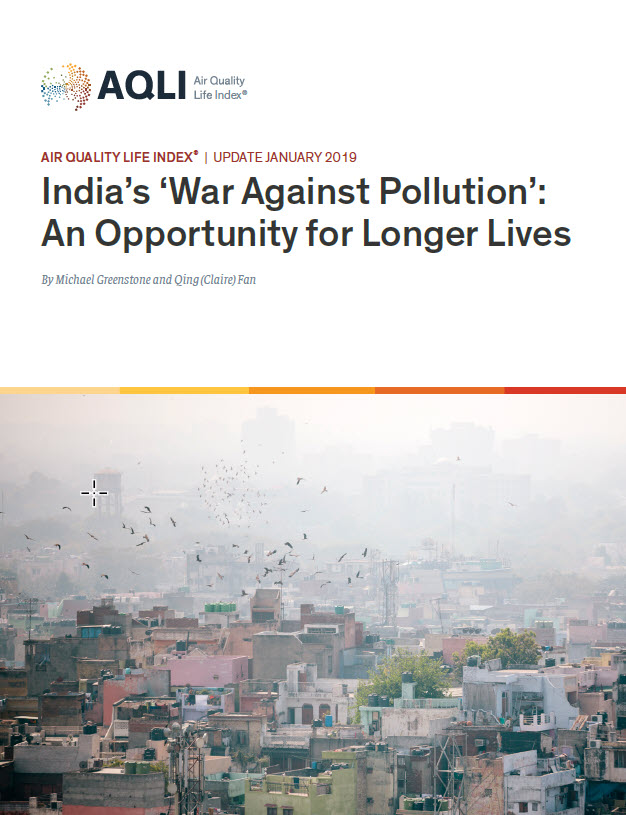
-11月-2
空气质量寿命指数(AQLI),在测量和表示颗粒物空气污染的健康风险方面,是一个全新突破。这是因为AQLI 将细颗粒物污染浓度转化为了一个重要的测量标准:对预期寿命的影响。AQLI 显示,与世界卫生组织认定的安全水平相比,全球人口平均遭受的细颗粒物空气污染使全球人类预期寿命缩短了近两年。这种预期寿命的减少使得细颗粒物污染的破坏性超过了传染性疾病,例如:结核病和艾滋病、吸烟等致命行为,甚至战争。
See Past Reports